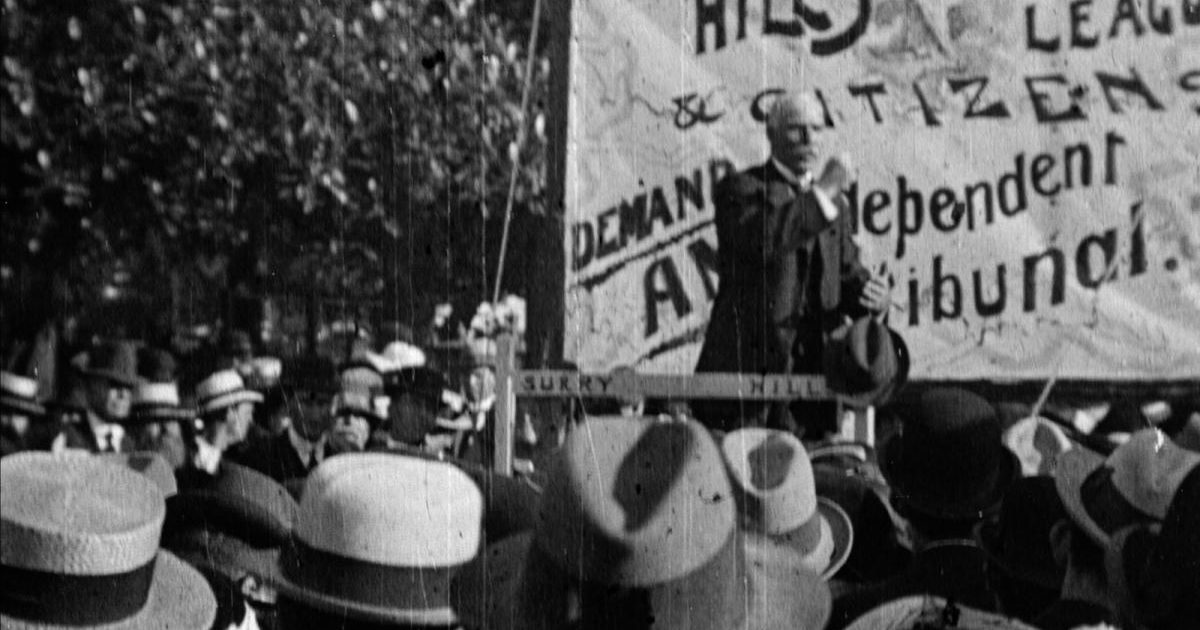The National Film and Sound Archive of Australia (NFSA) will release The Great Strike, a rare censored film documenting one of Australia’s largest industrial conflicts.
This footage, last seen in 1917, is a unique insight into a crucial moment in the history of the Australian union movement, as well as early 20th century Sydney.
The footage has been restored especially for the anniversary, and reconstructed by combining two surviving fragments of the original motion picture. The resulting 15-minute film will be available on the NFSA’s YouTube channel from 31 July, ahead of the anniversary on 2 August. It will also screen at 1917: The Great Strike, a new exhibition at Carriageworks marking the centenary from 15 July to 17 August.
Acting CEO Meg Labrum said: ‘The Great Strike is a remarkable example of 100-year-old social history captured on film, having miraculously survived censorship and the passage of time. Audiences will be able to explore The Great Strike online in time for its 100th anniversary. We are proud of this film, and pleased to present it in collaboration with the City of Sydney and Carriageworks.’
With an original running time of an hour, The Great Strike was released in October 1917 in the dying days of the strike. But it was screened only once in its original form before it was embargoed, censored and given the rather dry new title of Recent Industrial Happenings in NSW. The film’s censorship was largely driven by the concerns of politician Walter Wearne, who had organised volunteer labour while the paid workers were on strike.
In bringing the film to life for a new audience in 2017, City of Sydney and National Film and Sound Archive staff undertook extensive research. As the film was only ever screened once, it’s believed that no more than one or two prints would ever have existed.
The strike was originally documented by Arthur Charles Tinsdale, a little known filmmaker who, over the span of his career, also worked as a producer, cinema manager and even a vaudeville singer. Tinsdale is also recognised by film historians as being responsible for producing the A H Noad film – a compilation of newsreels covering the Gallipoli campaign now held by the Australian War Memorial.
The NFSA has long held a 12 minute 35mm fragment from the censored Recent Industrial Happenings in NSW, and it had been presumed this was the only surviving footage. A slightly different version of this same footage (in a different sequence) was later found on a 16mm print. Then, in 2016, a six minute 35mm reel containing additional scenes from the film was discovered in the NFSA collection.
The two 35mm reels were scanned and pieced together with the aid of a ‘Synopsis of Scenes’ published in The Daily Post in 1917. The ad, which featured a detailed chronological listing of the film’s key scenes, allowed the team to recreate the film as accurately as possible, and determine which key moments were missing.
With more than 90 per cent of Australia’s silent film heritage thought to be lost, it is likely that these censored scenes have vanished from our records. Anyone who may know anything about the missing footage is encouraged to contact the NFSA at [email protected].


